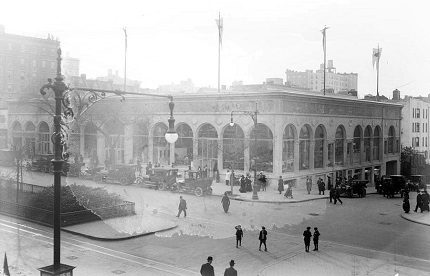 Vincent Astor's Market Opens
Vincent Astor's Market Opens1915
The site at the southwest corner of Broadway and 95th Street was first developed in 1915 when Vincent Astor spent $750,000 to create the Astor Market. Despite Astor’s backing, the expansive two-story food hall failed within two years.
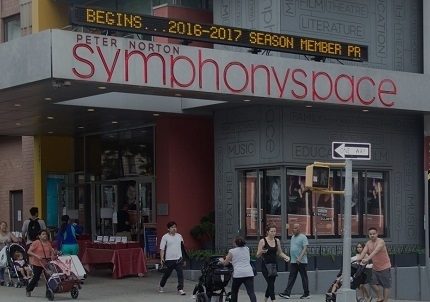 The Crystal Palace
The Crystal Palace1917
Astor sold the building to Thomas J. Healy—subsequently the developer of adjacent Pomander Walk—who converted the market’s Broadway level into the Crystal Palace Skating Rink and the smaller basement area into the Sunken Gardens, a restaurant. The ice skating rink was, in turn, doomed by a 1918, WWI-related shortage of ammonia—a key ingredient in making ice.
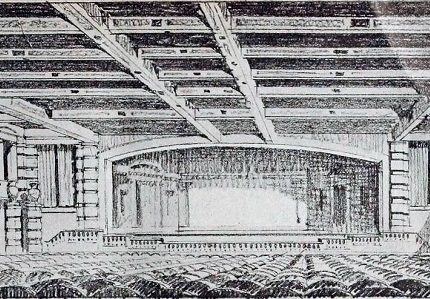 The Symphony Theatre is Born
The Symphony Theatre is BornJune, 1918
According to press articles of the time, the event featured an extravagant patriotic tableau depicting the destruction of a small French village by German bombardment in WWI, accompanied by a live 50-piece orchestra.
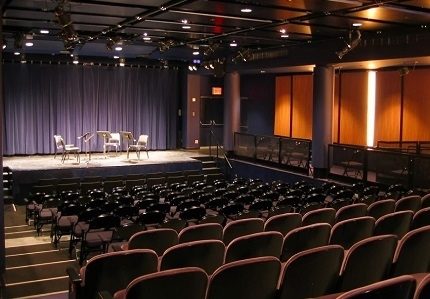 Thalia Theatre Opens
Thalia Theatre Opens1931
The basement space under the Symphony Theatre opened as a movie theatre, called the Thalia after the muse of comedy and idyllic poetry. The Art Deco theatre’s most distinctive architectural feature was its innovative "parabolic reversed floor," developed by the architect Ben Schlanger. Schlanger believed that the traditional live theatre auditorium was not suited for viewing a flat movie screen. In the Thalia, with a floor that dipped in the middle, the view from all seats would be equally good─or so his theory ran.
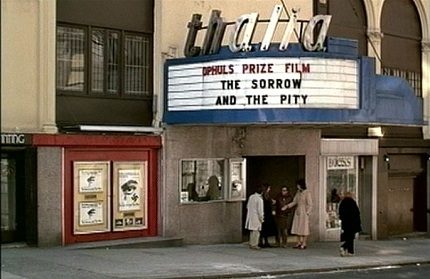 A Haven for Movie Buffs
A Haven for Movie Buffs1946
The Thalia become known to generations of movie buffs— from college students to longtime Upper West Siders—as one of the places to see Hollywood revivals, classics, and foreign films. Today, in addition to showing films, the Thalia serves as a venue for literary events, music concerts, comedy shows, talks, and children’s programs. Peter Bogdanovich and Martin Scorsese were among its regular patrons, as was Woody Allen, who immortalized the theatre in his 1976 film Annie Hall.
- Symphony Theatre Goes Dark
1970
During the economic downturn of the 1970s, the Thalia hung on as an iconic Upper West Side institution, but the Symphony went dark. It was occasionally rented, mostly for boxing and wrestling events.
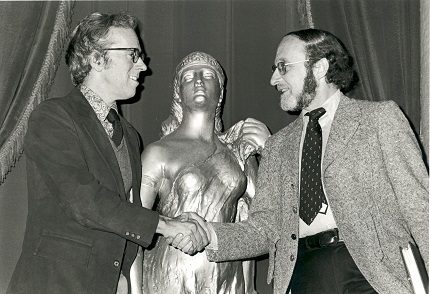 Wall to Wall Bach
Wall to Wall BachJanuary, 1978
On January 7, 1978, the conductor Allan Miller and his neighbor, playwright and director Isaiah Sheffer rented the decrepit theatre for a one-day extravaganza, Wall to Wall Bach, a free 12-hour music festival featuring audience participation. So successful was the event, that Sheffer and Miller immediately decided to lease the building and transform it into a permanent cultural venue. Programming ensued shortly after.
 Bloomsday on Broadway is Born
Bloomsday on Broadway is Born1981
Named after Leopold Bloom, the main character in James Joyce’s Ulysses, Bloomsday is celebrated around the world on June 16th. Symphony Space’s contribution is an annual literary rite of spring honoring the love, life, and language in James Joyce’s lavish prose.
 Global Arts Education Program Begins
Global Arts Education Program Begins1981
Global Arts: Cultural Literacy & Heritage Program helps students develop an understanding of the different cultures and the common traditions that hold us together as a global community. The program takes children on a journey of discovery and exploration to celebrate the beauty inherent in the art and history of diverse cultures—Asia, Africa, Latin America, Native America, Early America. On our stages, and in classrooms across New York City, students join artists to play instruments, participate in dances, and learn about the languages and values of each culture through traditional folk tales.
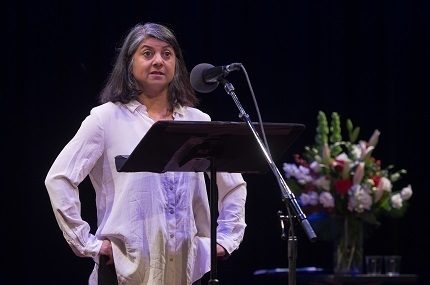 First Selected Shorts
First Selected Shorts1985
Created by Isaiah Sheffer and Kay Cattarulla, who became Symphony Space’s founding producer of literary programs, the ongoing series’ events take place live in the Peter Jay Sharp Theatre and are broadcast on over 150 public radio stations across the country, as well as via podcasts, reaching 300,000 listeners each week. The program also sponsors live-performance tours nationwide. Sheffer served as both the host and a reader for Selected Shorts until his death in 2012.
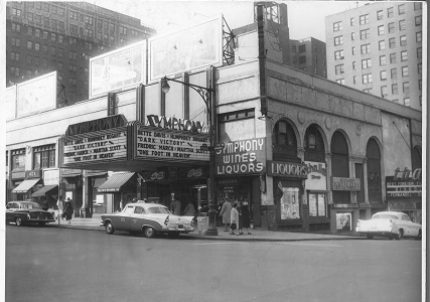 Broadwest or Bust
Broadwest or Bust1985
Broadwest had sold its rights to reacquire the building, and in 1985, the new holder attempted to evict Symphony Space two years before it was legally entitled to reclaim the property.
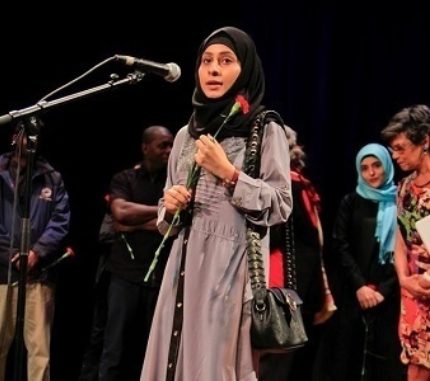 All Write! Adult Literacy Program Begins
All Write! Adult Literacy Program Begins1993
Inspired by our beloved Selected Shorts, All Write! uses the power of the spoken word to encourage a love of literature and learning while improving written and verbal communication skills. Symphony Space partners with colleges, libraries, and community-based organizations to open a world of opportunities for thousands of adult learners—completely free of charge.
- Sweet Victory
1996
To keep the theatre alive, and with no alternative, Symphony Space now embarked on eleven years of litigation. The key issue was the application of an old English legal doctrine, the Rule Against Perpetuities. In 1996, the state’s highest court, the Court of Appeals, unanimously awarded Symphony Space permanent ownership.
- Renovation
2000
Symphony Space sold its air rights above to the Related Companies, which built a twenty-two-story apartment building above the existing theater. Using income from this sale, as well as donations from Peter Norton, the Peter Jay Sharp Foundation, Leonard and Susan Bay Nimoy, and many others, the organization financed a $13 million renovation that included the integration of the Thalia, as well as establishing an endowment to provide perpetual stability for the institution.
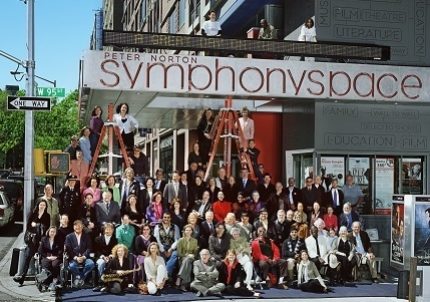 Great Day on the Upper West Side
Great Day on the Upper West SideMay, 2006
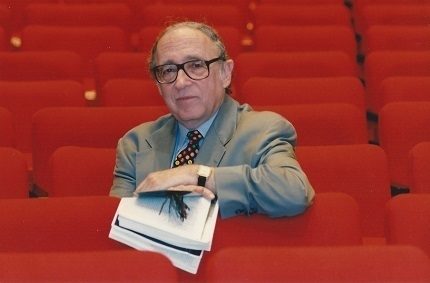 Founding Artistic Director Isaiah Sheffer passes away
Founding Artistic Director Isaiah Sheffer passes away2012
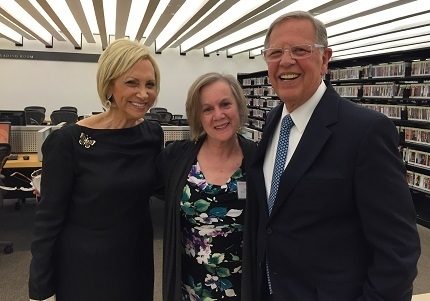 New York Public Library Exhibition
New York Public Library Exhibition2015
The New York Public Library for the Performing Arts presented SYMPHONY SPACE: A CULTURAL TOWN SQUARE, a special exhibition which explored the early years of our building—as a food market, an ice skating rink, and later as the legendary Symphony and Thalia movie theaters. The exhibition traced the extraordinary success of Symphony Space, from its first Wall to Wall Bach in 1978 to its prominence today.
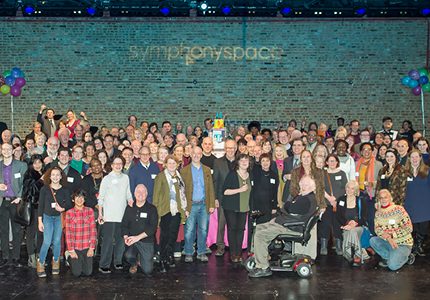 40th Anniversary of Symphony Space
40th Anniversary of Symphony SpaceJanuary, 2018
On January 7th, 2018, members of the extended Symphony Space family gathered on the Sharp stage to share heartfelt memories—and raise a glass to celebrate 40 extraordinary years of music, literature, film, family, and arts education programs.